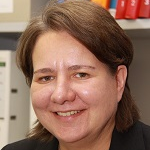From Enemies to Friends: Converting Disease-Causing Viruses to Therapeutic Tools
A special issue of Genes (ISSN 2073-4425). This special issue belongs to the section "Viral Genomics".
Deadline for manuscript submissions: closed (10 March 2023) | Viewed by 7467
Special Issue Editors
Interests: adenovirus; vectorization; recombinant virus; viral vector; virotherapy
Special Issue Information
Dear Colleagues,
The conversion of wild-type viruses into therapeutic vectors represents a remarkable milestone in virology that has been achieved in the past decades. Virologists have reconstructed and fine-tuned their enemies (disease-causing viruses) to therapeutic tools to fight diseases. For examples, adenoviruses are currently used as vaccine vectors to combat the severe acute respiratory syndrome (SARS) CoV-2 pandemic, several AAV- and lentivirus-based gene therapy products are already on the market, and many viruses are being investigated as oncolytic/immune therapy platforms, such as herpes simplex virus-based talimogene laherparepvec (T-VEC).
Transforming viruses from enemies to friends remains challenging in many aspects, such as the deep understanding of basic virology, the proper methods for molecular engineering and the establishment of suitable vector systems. The previous accumulated knowledge has enabled us to generate powerful viral vector tools, while novel scientific and technical advancements will help us to further improve these vectors. Therefore, we believe it is important to prepare a Special Issue with the title “From enemies to friends: converting disease-causing viruses to therapeutic tools”.
We are pleased to invite colleges from different virus fields to contribute to our Special Issue. We welcome the submission of expert reviews on individual viruses to summarize the basic principles as well as current progress on the adaptation, attenuation and engineering of viral vectors, as well as current original research works.
Dr. Wenli Zhang
Prof. Dr. Anja Ehrhardt
Guest Editors
Manuscript Submission Information
Manuscripts should be submitted online at www.mdpi.com by registering and logging in to this website. Once you are registered, click here to go to the submission form. Manuscripts can be submitted until the deadline. All submissions that pass pre-check are peer-reviewed. Accepted papers will be published continuously in the journal (as soon as accepted) and will be listed together on the special issue website. Research articles, review articles as well as short communications are invited. For planned papers, a title and short abstract (about 100 words) can be sent to the Editorial Office for announcement on this website.
Submitted manuscripts should not have been published previously, nor be under consideration for publication elsewhere (except conference proceedings papers). All manuscripts are thoroughly refereed through a single-blind peer-review process. A guide for authors and other relevant information for submission of manuscripts is available on the Instructions for Authors page. Genes is an international peer-reviewed open access monthly journal published by MDPI.
Please visit the Instructions for Authors page before submitting a manuscript. The Article Processing Charge (APC) for publication in this open access journal is 2600 CHF (Swiss Francs). Submitted papers should be well formatted and use good English. Authors may use MDPI's English editing service prior to publication or during author revisions.
Keywords
- virus genome/gene
- vectorization
- viral genome engineering
- gene/transgene function and design
- vaccine vectors
- gene therapy tools
- oncolytic viruses







